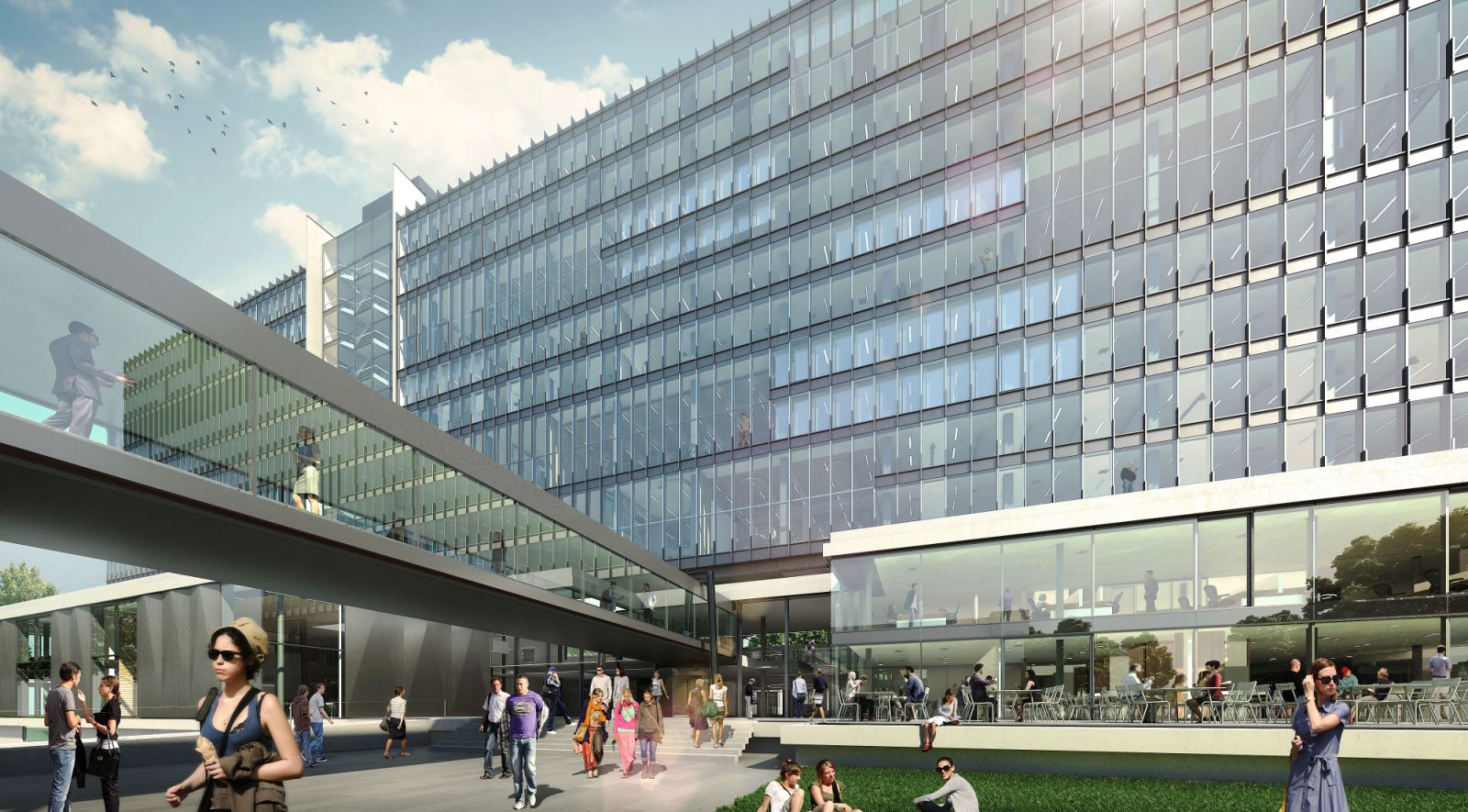After the current renovation is completed, the Main Building of the Eindhoven University of Technology will be the world’s most sustainable university building. On Tuesday 27 September the renovation design has been awarded a BREEAM Outstanding.
With 93.86% the project has the world’s highest score ever in the category of education buildings. This is stated by the Dutch Green Building Council (DGBC), which is responsible for the BREEAM-NL sustainability label in the Netherlands. The design for the University Main Building, which will be called Atlas after its renovation, was created by Total Engineer Team RSVP.
Team RSVP is an integral and multidisciplinary design team consisting of Team V (architect), Van Rossum (construction engineer), Valstar Simonis (building installations engineer) and Peutz (building physics engineer and sustainability expert).
Particularly special about the Team RSVP design is the new curtain wall consisting of highly insulating triple glazing. Interior sun blinds with a hi-tech coating keep the heat out during the day and provide for extra insulation at night.
“By using state-of-the-art materials this ‘simple’ curtain wall with lowered sun blinds equals the thermal values of an insulated cavity wall,” states Team RSVP. Equally special is the building’s ‘night flush’. During summer nights the floor-high windows slide outwards to cool the building and purify the air.
Taking the lead
“We are really proud of and pleased with this result,” says Jo van Ham, vice-president of the TU/e executive board. “Sustainability is a hugely important theme in our education and research, and this also means taking the lead in terms of our buildings and operations. We have been investing extra in sustainability for fifteen years now, with campus-wide geothermal storage one of the outcomes. This geothermal system is one of the biggest in Europe.”
“What fantastic ambition TU/e is showing here,” is the reaction of DGBC director Annemarie van Doorn. “Once this BREEAM-NL Design stage certificate actually becomes a Post-construction stage certificate, then the main building will become a model for all universities and institutions of higher education throughout the world. We warmly applaud investments in sustainability and health. Especially in education buildings where The Netherlands’ future generation is educated.”
Living Lab
During the design phase the Team RSVP sustainability experts worked closely with researchers from the TU/e. As a result the Atlas building will function as a living lab for research on innovative and sustainable technologies. The whole building is equipped with a smart and efficient LED lighting, standardly configured at a relatively low light level condition. Users can adjust the light settings themselves through an app. The university intends to study people’s well-being in relation to the customizable lighting system.
CO2 down 80%
The Atlas building will soon no longer have a gas connection. All the heating and cooling the building needs will come from the campus-wide TU/e geothermal system that stores heat and cold separately in the subsurface.
In addition, there will be solar panels able to supply 500 megawatt hours per year, which will cover the majority of the building’s power requirements. All these initiatives will reduce the CO2 emission of the building by around 80 percent, even though the number of ‘residents’ of the building will more than double.
The Atlas building will house the department of Industrial Design, the department of Industrial Engineering & Innovation Sciences, the university executive board and the support services. The original building from 1963 has sixteen floors and a surface area of 44,000 square meters. The project will be completed in the summer of 2018. Source and Images Courtesy of Team V Architectuur.
